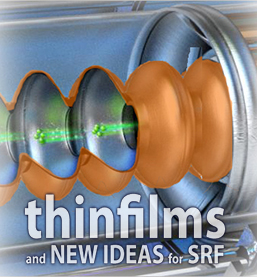Speaker
Description
V3Si is a types-II superconducting within the A-15 family of superconductors with a critical temperature (Tc) of 17K and a second critical field (HC2) of 24.2 T [1]. This means that an SRF cavities using V3Si rather than Nb would in theory be able to maintain a higher operating temperature and greater accelerator voltages. However, the material properties make bulk V3Si cavities impractical, so to gain the benefits of V3Si, it must be deposited as a thin film.
Previous studies showed SC properties of V3Si (as measured by RRR and Tc) are depends on deposition temperature via Stoichiometry, with temperatures of up to 800C needed to achieve satisfactory results [2]. HiPIMS is a deposition technique capable of performing ion bombardment during the deposition process and this ion bombardment has been shown to have similar effects to sample heating[3]. Theoretically, this would allow control of stoichiometry without the need for such high temperatures or post-annealing.
In this work, V3Si is deposited via both DC and from a range of HiPIMS supplies using a single target. Flat V3Si samples are produced on both copper and sapphire substrates, at temperatures up to 700C, however no post-annealing was employed. The samples are measured by VSM and have RRR taken to compare superconductive properties. SEM images are also taken to investigate surface properties. These were augmented with EDX for sociometry and EBSD. The best results showed a Tc of 15.1 K.
[1] Valente-Feliciano A-M, Supercond. Sci. Technol. 29 (2016) 113002
[2] ZhangY, China Institute of Atomic Energy Dissertation (2000)
[3] Anders A, Thin Solid Films 518 (2010) 4087–90

